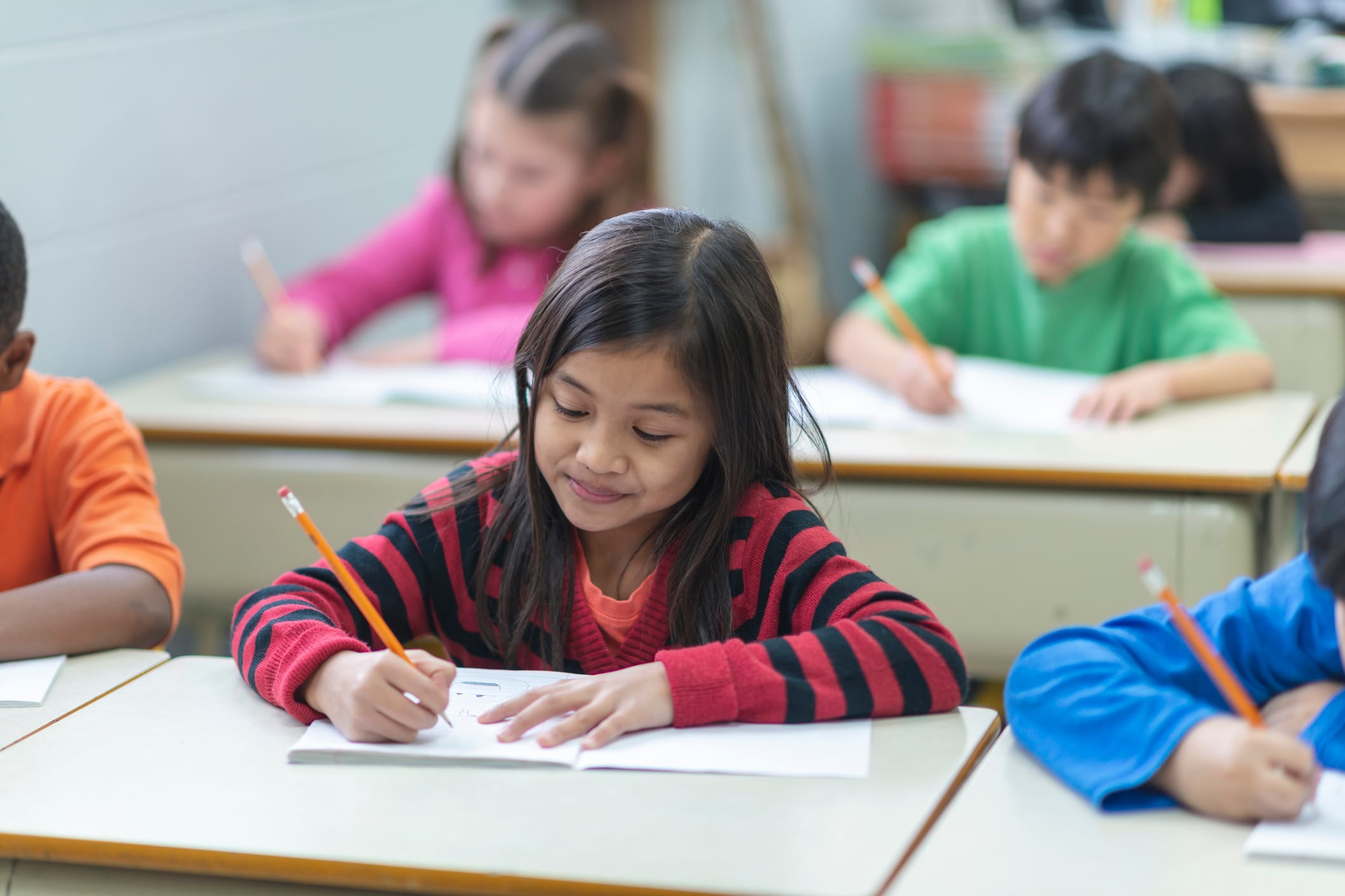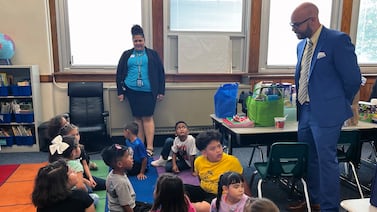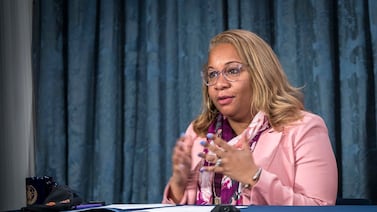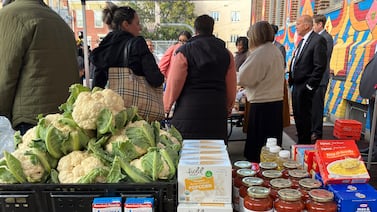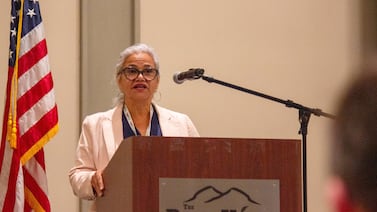Frequent disruptions during the past few school years have left parents and educators questioning how much New York City children have fallen behind academically during the pandemic.
New results from the National Assessment of Educational Progress, or NAEP — given to a random sampling of fourth and eighth graders — provide a complicated answer.
Math scores for the city’s fourth graders fell by a record 9 points compared with 2019, the last time the exam was administered, while the 4-point drop for eighth graders was not considered a significant change by researchers. Perhaps surprisingly, fourth and eighth grade reading scores stayed about the same.
Fourth grade math scores on the exam known as the “nation’s report card” mirrored trends across the United States, showing historic drops in the subject. But results from the five boroughs did not line up with the national dip in reading scores.
Still, New York City’s scores on math and reading remained below national and New York state averages.
Though the state’s trends were similar to national ones, New York still has “work to do to get students to where they need to be, not just academically but social emotionally as well,” said Emily DeSantis, a spokesperson for the state education department.
The pandemic exacerbated many of the inequities that already pervaded the school system. It left students, families, and teachers dealing with multiple crises, including the deaths of loved ones, illness and long stretches of isolation. And even as campuses reopened last year, learning continued to be interrupted for many children. More than 40% of students were chronically absent last year, missing at least 18 days of school.
The NAEP results provide the first authoritative insight on where students may need extra help and where districts should consider dedicating their resources, such as federal relief dollars that are set to run out in 2024.
“We have to be committed for the long haul to get students the support they need, to make sure schools have the resources and training they need to be able to provide that support, and not to just expect that in 2024, we’re done with this,” said Sarah Part, policy analyst for Advocates For Children New York, which supports the city’s highest need students.
“There will be rippled effects for the next decade, probably,” she said.
Just 18% of the city’s fourth graders were proficient in math, compared with 24% in 2019. Levels that low in New York City have not been seen for nearly 20 years, according to the results.
Compared to other urban districts, the city’s results were mixed. For example, eighth grade math and fourth grade reading scores were slightly higher than other urban districts, while eighth grade reading was on par with others.
NAEP scores, unlike state tests, haven’t changed over time, making it possible to compare scores over the years and compare students across different states. But one complicating factor for many districts is declining enrollment: if a different pool of students takes the tests, it could affect scores.
Racial disparities in NAEP scores
There were large disparities among white and Asian American students compared with their Black and Hispanic peers. In fourth grade math, for instance, just 11% of Black and Hispanic students scored proficiently, compared with 39% of white students and 48% of Asian American students. In eighth grade math, just 6% of Black students were proficient, compared with 12% of Hispanic students, 46% of white students and 58% of those who are Asian American.
New York City schools Chancellor David Banks highlighted these disparities and said the results show “far too many of our students are not achieving proficiency” in math and reading.
“I firmly believe that every student can achieve excellence and every school has the capacity to make that happen — we just need to support them getting there,” Banks said in a statement.
Students of color, especially those who are immigrants and come from low-income families, were more likely to lose loved ones, have parents who lost work, or be charged with extra responsibilities, such as caring for younger siblings, said Part, of Advocates for Children.
One federal report found that half of low-income families reported someone in their household losing work or getting a pay cut in 2020. In New York City, Black and Hispanic workers were more likely to be required to work in person, increasing their risk for becoming infected with COVID, according to the report.
“Even if the kid is very young and doesn’t totally understand the details of what’s going on, they sense that their parents are super stressed out and things are not good,” Part said. “All of that affects their ability to learn and focus and get the most out of instruction.”
To help students recover academically from the pandemic, city officials had dedicated more than $750 million toward academic recovery programs and extra services for students with disabilities to be used through 2024, including sending hundreds of millions of dollars directly to schools to create tutoring and enrichment programs. Schools struggled to spend that money last year.
Part’s organization has called on the city’s education department to use COVID dollars for more targeted academic interventions, such as more evidence-based reading interventions. City officials have plans to screen every child for reading challenges and have required schools to spend a portion of their relief dollars on literacy efforts.
Hurdles in catching kids up
Though the city’s eighth graders didn’t see statistically significant changes in reading or math scores on NAEP, along with fourth grade reading scores, state tests point to more concerning declines.
Unlike NAEP, eighth grade math scores fell significantly, by 11 percentage points.
In line with the NAEP scores, however, reading scores grew slightly for eighth graders on their state tests.
(Education officials said it’s difficult to compare state test scores to 2019, since about 20% fewer city students took state exams last year due to enrollment declines, as well as children opting out of the tests.)
New York City has also administered its own school-based assessments for core subjects, but has refused to publicly release those results.
This year, schools are facing new challenges. Due to declining enrollment, city officials cut budgets at three-quarters of city schools. Many were forced to let go of teachers, increase class sizes, and cut back on enrichment. Despite pressure from City Council and advocates, Mayor Eric Adams declined to use billions of remaining COVID dollars to cover these cuts.
Many educators argue that those cuts have made it tough for schools to help students recover, both academically and socially. The department also has sent less money directly to schools this year for academic recovery and pared back its program for students with disabilities.
At one Bronx middle school whose students were part of the NAEP testing pool, the job of teaching has become especially tough, said art teacher Jake Jacobs.
Last school year, following multiple resignations, the school was short two science teachers. Educators licensed in other subjects, such as math, had to fill in, meaning they didn’t always have enough time to plan lessons for their other courses, said Jacobs.
“I just think it is really unfair to those kids,” said Jacobs, who was among the teachers filling in.
About 90% of their students come from low-income families. One in five has a disability, while another quarter are learning English as a new language. Educators charged with helping these children have felt stretched thin. Many students were below grade level even before the pandemic, and many didn’t show up during remote learning, Jacobs said.
Educators have been assessing students and meeting to determine how to best use those results. For Jacobs, the efforts feel like an uphill battle: They’re spending days preparing children for various assessments, but he wants more time helping children one-on-one and getting them more interested in school.
“On the ground, when you’re an actual teacher in the classroom, it’s really intrusive to take so many tests,” Jacobs said.
For Elisa Capers’ fifth-grade daughter, who enjoys reading but struggles with math, it was tough “getting back into the groove” after spending part of second grade and all of third grade in remote learning. Returning last year, she felt overwhelmed by worksheets and more challenging lessons.
“It was right back into it,” said Capers, an East Harlem mom who works as an educational consultant. “The kids developmentally and socially just weren’t there yet. I think that turned a lot of the kids off.”
Like most city students, her daughter did not score proficient on state reading or math exams.
Capers thinks her daughter is in a better place now, after a full year of in-person learning. There are some signs of progress. Her school-based assessments show that she’s reading on grade level, and she’s regularly thumbing through comics and graphic novels on her tablet. She’s one grade level behind in math, and Capers has signed her up for math tutoring with Kumon.
Still, Capers has emphasized to her daughter that her scores on state tests or other standardized exams doesn’t mean she’s failed.
“I tried to make light of it and told her this doesn’t define you, I know what you’re able to do,” Capers said.
Reema Amin is a reporter covering New York City schools with a focus on state policy and English language learners. Contact Reema at ramin@chalkbeat.org.

